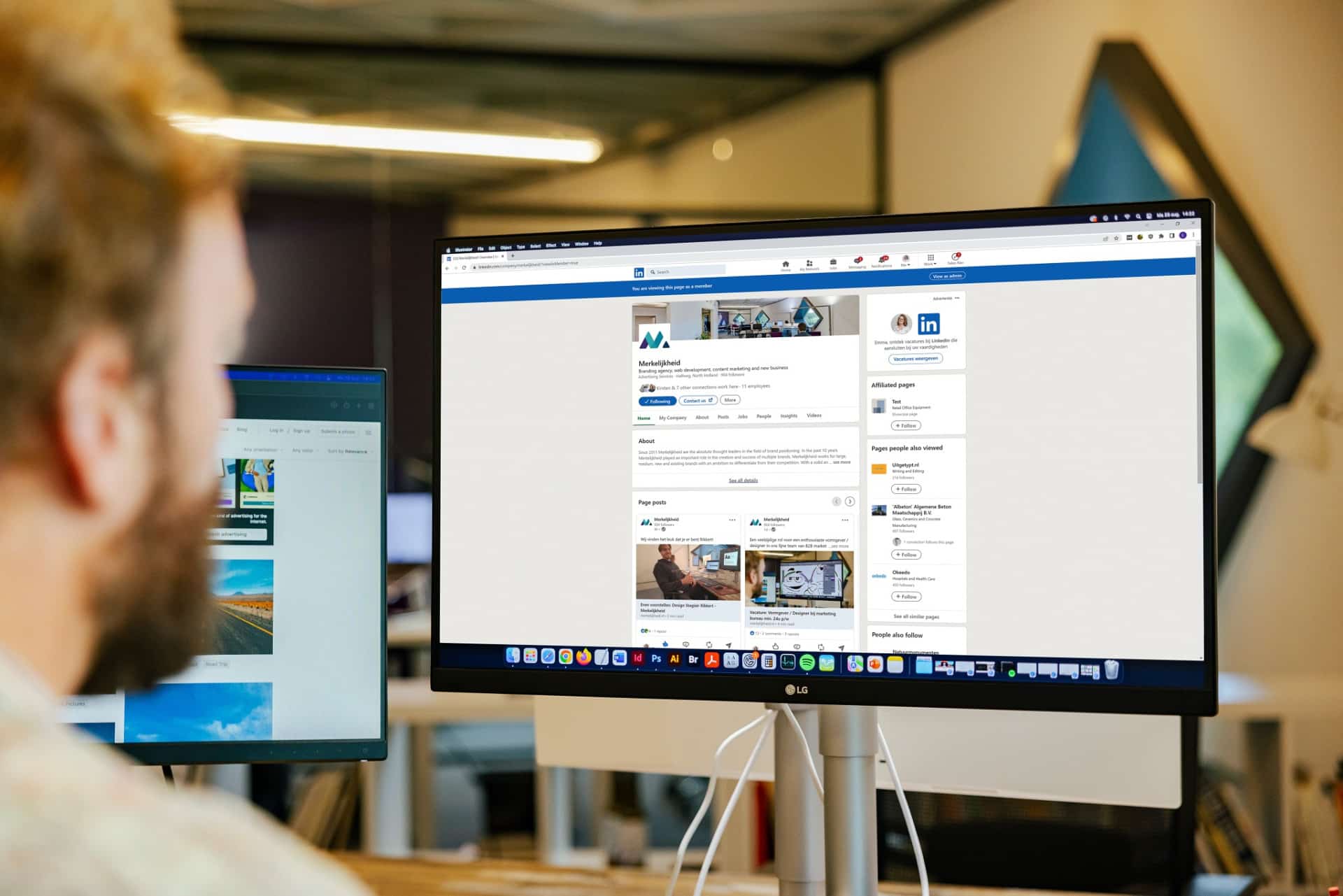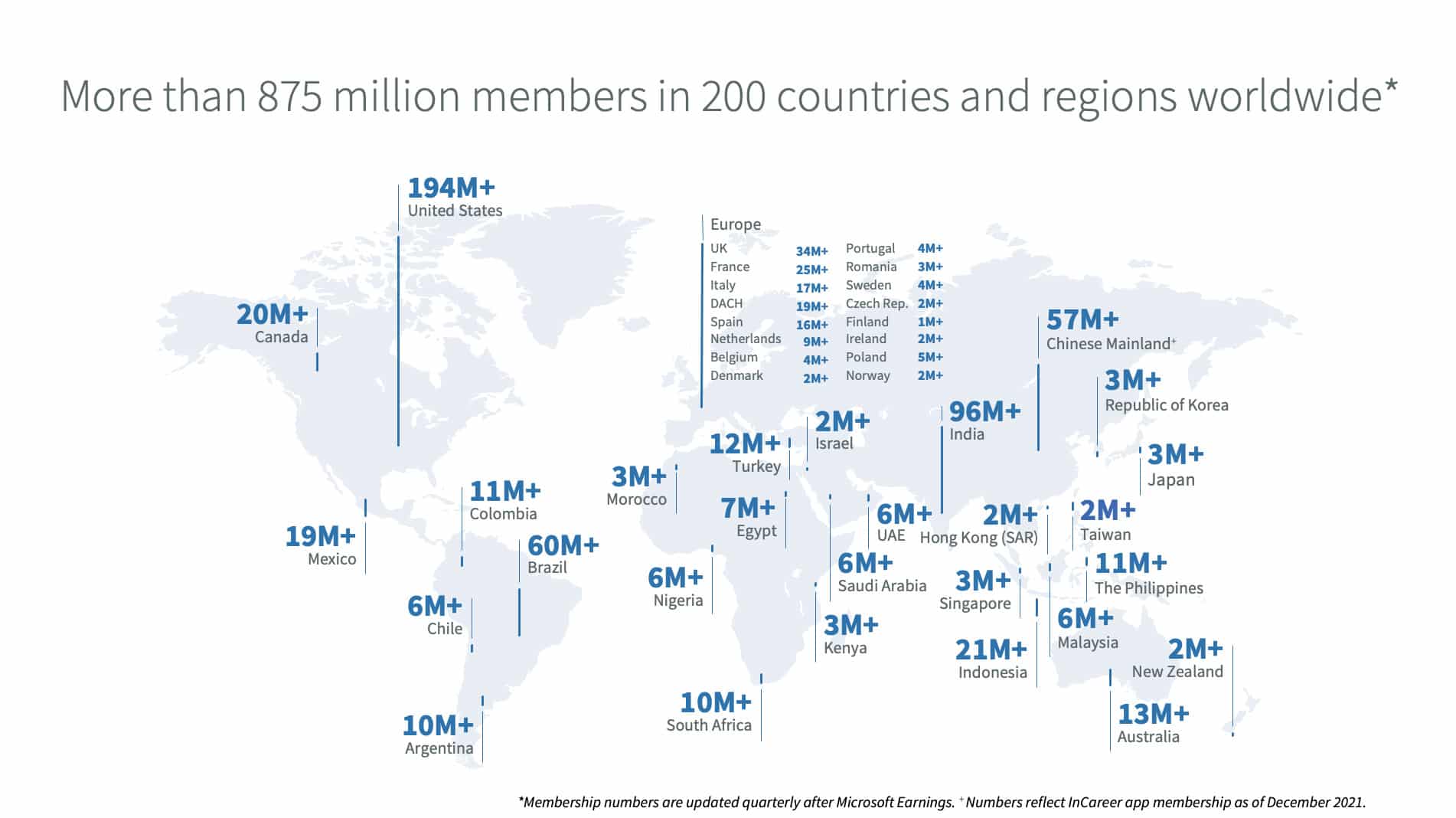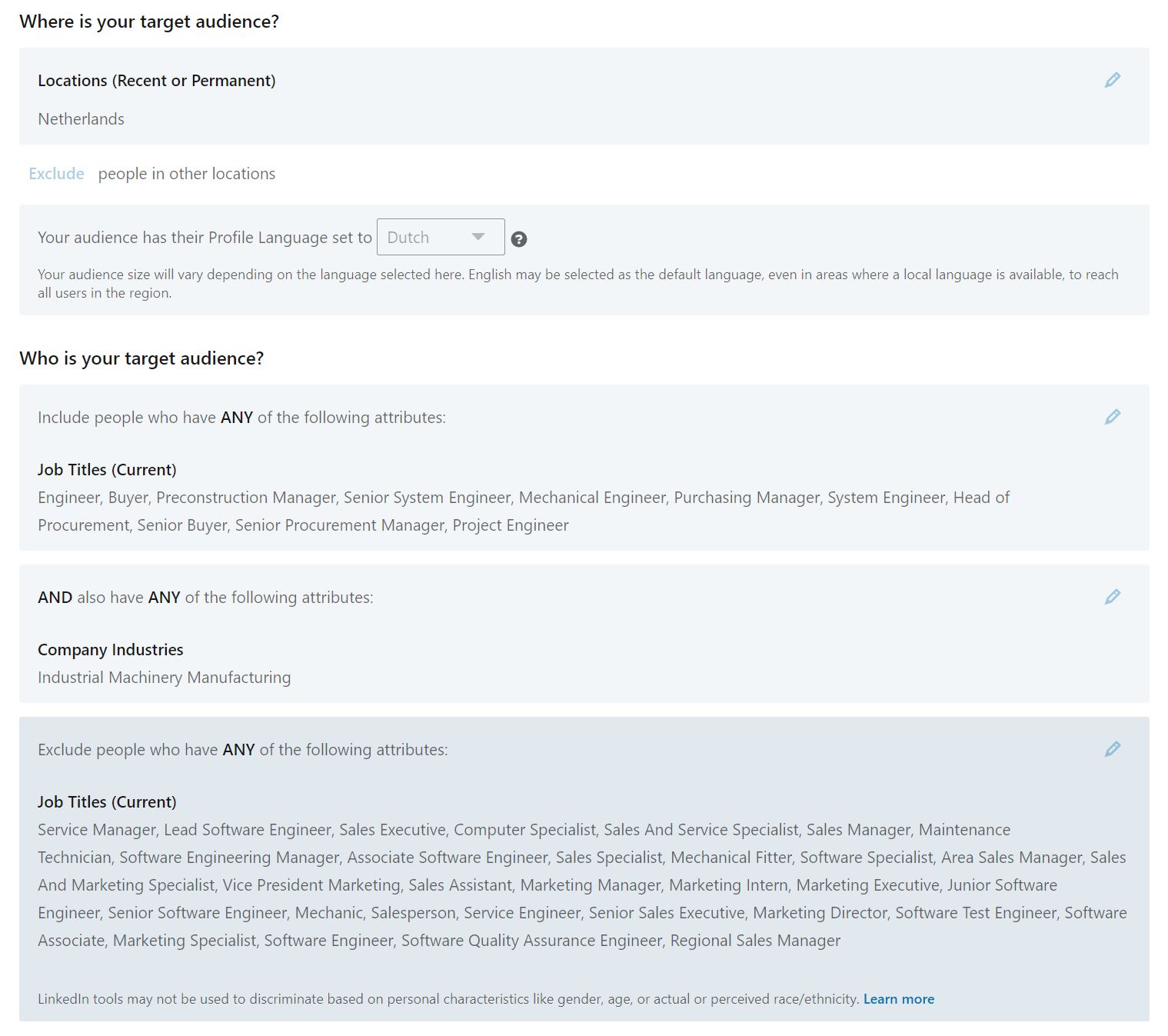*LinkedIn Advertising
B2B Advertising: The Advantages of LinkedIn Advertising

What is the most efficient way for a B2B company to reach decision-makers in their target audience? LinkedIn may not be the social media platform we wake up to in the morning, but it is the primary business-focused social media platform in the Netherlands. Your target audience uses LinkedIn to seek inspiration and information. To achieve success in B2B online marketing, LinkedIn should be an essential part of your plans. In this article, we share the five key benefits of advertising on LinkedIn. Of course, we are not blind to LinkedIn’s shortcomings, so we also discuss its biggest disadvantage.
Veel bedrijven zijn al actief op LinkedIn maar maken nog niet gebruik van alle mogelijkheden
Many organizations are actively engaged on LinkedIn organically; they have a company page, share content there, and perhaps actively encourage their colleagues to share and like this content. However, they only reach a limited audience, as people who are not already acquainted with them do not see this content. This is where LinkedIn Advertising comes into play.
Five Benefits of LinkedIn Advertising
The main reasons to allocate budget for LinkedIn Advertising in 2023 are:
1. LinkedIn is the largest business-oriented social media platform.
2. Your competition isn’t using LinkedIn Advertising yet.
3. LinkedIn advertising offers a unique opportunity: measurable outbound marketing.
4. Advertising on LinkedIn is very cost-effective.
5. Reach precisely the right audience and get to know them better.
Advantages of LinkedIn: The largest business-oriented social media platform
LinkedIn has over 850 million members worldwide, and this number continues to grow each year. Most of these members come from the United States. Outside the US, LinkedIn is particularly popular in several Asian countries and Europe. In the Netherlands, for example, 11 million people are active on LinkedIn.

Bron: Statistiek pagina LinkedIn
What makes LinkedIn unique in the social media landscape is its business focus. Almost every member is affiliated with an organization or educational institution, includes their job title on their profile, and can even link to skills.
This is the platform where your decision-makers and potential customers seek business inspiration and information, and where you can actively engage with them before they start searching on Google for a product, solution, or service.
Your competition isn’t using LinkedIn advertising yet
Although advertising on LinkedIn is certainly not new, there are still relatively few companies that advertise on LinkedIn. Larger, international organizations are the primary advertisers on LinkedIn. However, the niches where LinkedIn can be highly effective have either not discovered the platform yet or may not know how to effectively utilize it. This makes LinkedIn unexplored territory where you can easily gain an advantage over your competitors.
Curious if your competitors are advertising on LinkedIn? You can see which ads they are using on any company page. Go to the company page and look under “Posts” in the “Ads” section.

A Unique Opportunity: Measurable Outbound Marketing
Which online marketing opportunities are you currently utilizing? Virtually every organization has a website and is active on several social media channels. In addition, newsletters, content, and Google Ads are the known pillars in almost every comprehensive online marketing strategy. And rightfully so! Each of these methods adds visibility to your brand and attracts people to your website. However, advertising on LinkedIn offers you a unique opportunity.
With newsletters and content on social media, you send information to known contacts and (potential) clients. With a well-developed SEO strategy and well-structured Google Ads campaigns, you attract people to your website who are looking for a solution, service, or product that you offer. But in reality, that’s just the tip of the iceberg. What lies beneath? Which companies are unaware of the existence of your brand? You probably don’t know many potential clients yet.
Advertising on LinkedIn gives you the opportunity to approach your target audience directly before they start searching for information. Of course, this is not entirely new; you can also advertise through Facebook, attend a trade show, or place an article in a trade magazine. However, none of these channels offer you the ability to run such an accurate outbound marketing campaign.
This makes advertising on LinkedIn a unique opportunity. No other platform allows you to create a target audience based on job title, company name, years of experience, and more. Only LinkedIn has this information because everyone uses it as a CV. The accuracy of targeting makes LinkedIn advertising, in our opinion, the best platform to reach your business audience with outbound marketing.
Why Advertising on LinkedIn is Highly Cost-Efficient
How much do you pay for an advertisement in an (online) trade magazine or a booth at a trade show? In our experience, these costs (CPM or total campaign costs) are at least comparable, but in many cases, they are much higher than for a targeted LinkedIn campaign. The key difference? On LinkedIn, you determine who you want to reach and configure the campaign so that only those people see your campaign. You use your budget efficiently.
Depending on your goals and the size of your target audience, you can expect a Cost Per Mille (CPM) of €7 to €45 for campaigns focused on brand awareness, video views, and website traffic. For Lead Generation campaigns, this can go up to €80. If you’re considering advertising on LinkedIn, factors such as your goals, target audience size, the number of campaign phases, and the overall campaign duration are important to consider. Additionally, there is a minimum daily budget of €10.
Certain knowledge and experience are, of course, necessary to get the most out of your campaigns. You probably don’t have that expertise in-house. Of course, you can build it yourself, but you can also seek the help of an expert, like Merkelijkheid. Our team knows everything about LinkedIn and helps you determine the optimal target audience and set up an effective campaign. We then monitor the campaign closely and keep you informed with regular updates. This way, you stay in control. Want to know how it works in practice? Contact us.
Benefits of LinkedIn: Reach the Exact Right Audience and Get to Know Them Better
LinkedIn offers unique opportunities for building your target audience. LinkedIn is the platform where you need to define your target audience as precisely as possible. This ensures that your campaign is only presented to relevant people, and it allows you to adjust the campaign and align your message as closely as possible with the needs of your audience. A too broad target audience can be costly and makes it difficult to fine-tune your campaign. But how exactly can you define your target audience?
The answer to this question depends largely on the campaign’s objective. For example, we set up campaigns to increase brand awareness in a specific industry among companies with up to 200 employees, which in the Netherlands, for example, could result in a target audience of about a thousand people. But we also create target audiences and campaigns for our clients focused on specific companies in multiple countries, which can sometimes result in a target audience of thousands of people.
In broad terms, you can define your target audience based on:
- Company
- Demographic data
- Education
- Experience
- Interests and characteristics
Each category has subcategories. What we like about LinkedIn is that, with each campaign, we and our clients learn something new about the target audience. The campaign results provide insights into industries, companies, and job profiles: even if it’s just one additional company whose existence you were not aware of. We consider this information highly valuable and see it as one of the most significant advantages of LinkedIn.
The biggest disadvantage of LinkedIn
Although we see many advantages to advertising on LinkedIn and are enthusiastic about the platform, we are aware of the disadvantages. By far the biggest disadvantage of LinkedIn is the transparency of results.
When you run a campaign on LinkedIn, you gain valuable insights into industries, companies, job roles, and more. However, in LinkedIn’s campaign manager, you always see only 25 rows of results. This means that you essentially only see the top 25 results based on impressions or clicks, even though your campaign may have been shown to hundreds of companies. Additionally, LinkedIn places great importance on protecting the privacy of its members, which is, of course, good for individuals but means that you can’t always trace where the clicks on your ad are coming from.
We consider this a significant disadvantage because this information is essential for setting up and adjusting campaigns. There are ways to extract a bit more information from LinkedIn, such as examining results on a daily basis. This provides some additional insight, but the results will still be dominated by the largest companies, job titles, and more in your target audience.
Access to all LinkedIn data
A good way to truly extract more data from LinkedIn is through the tool we have developed ourselves to extract data from campaigns. With this tool, we can see all the companies and fine-tune our targeting even more accurately. Are you curious about how this looks or what it would mean for your brand? We’d be happy to tell you more in a personal conversation.
Are you (not yet) convinced of the possibilities on LinkedIn? We’d love to have a conversation with you and show you, based on data and our experiences, why you really need to allocate a budget for LinkedIn advertising in 2023. Want to know more? Read more about advertising on LinkedIn.
Toegang tot alle LinkedIn-gegevens
Een goede manier om echt meer gegevens uit LinkedIn te halen, is via de tool die we zelf hebben ontwikkeld om gegevens uit campagnes te halen. Hiermee kunnen we alle bedrijven zien en nog nauwkeuriger bijsturen. Ben je benieuwd hoe dit eruitziet of wat dit voor jouw merk zou betekenen? We vertellen je graag meer in een persoonlijk gesprek.
Ben je (nog niet) overtuigd van de mogelijkheden op LinkedIn? We gaan graag met je in gesprek en laten je op basis van data en onze ervaringen zien waarom je in 2023 echt budget moet vrijmaken voor LinkedIn-advertenties. Wil je meer weten? Lees dan meer over LinkedIn-adverteren.
